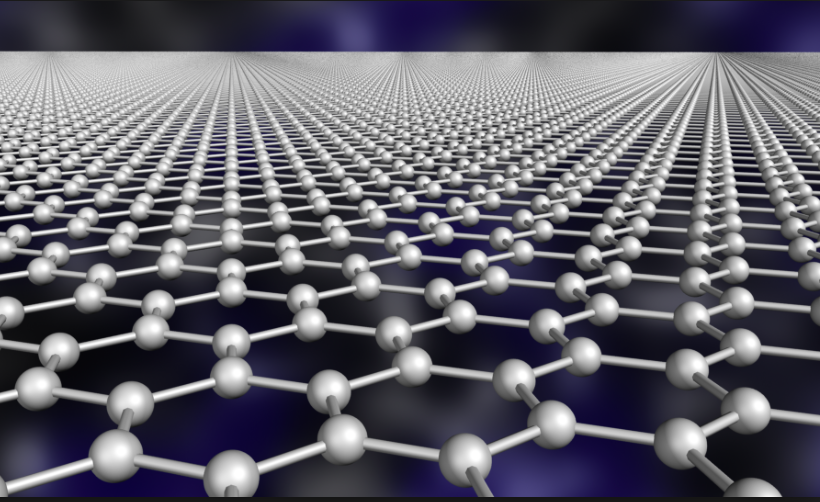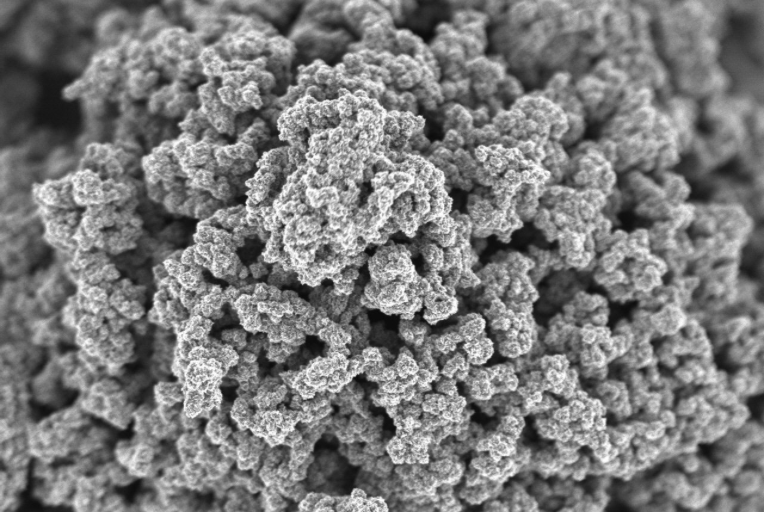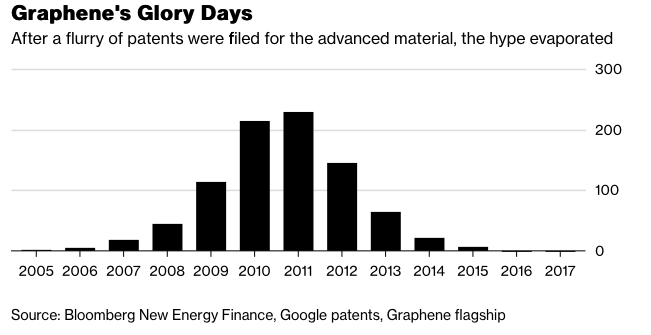Graphene, A Bet On The Future
TM editors' note: This article discusses a penny stock and/or microcap. Such stocks are easily manipulated; do your own careful due diligence.
Investors are always on the lookout for the next big thing. The piece of technology that will bring science fiction to life and transform the world. Occasionally this promise of the future leads to periods of investment mania. Where investors eager to own a piece of the future crowd into speculative new ventures, remember the 3D printing bubble or more recently, blockchain and crypto currencies? More often than not, these periods of mania do not last and interest in new technologies fizzles until only the true believers and innovators remain, to quietly develop the technology. One such technology that promises to revolutionize our lives but that has drifted from public view is graphene.

Graphene is an emerging material made up of a single layer of carbon atoms that are bounded together in a repeating pattern of hexagons. The material is a million times thinner then paper yet stronger than a diamond and 100-300 times stronger than steel. It conducts electricity 200 times faster than silicon and is incredibly flexible. It was discovered in 2004 by University of Manchester Professors Andre Geim and Kostya Novoselov, who ended up winning the Nobel Prize in physics for it in 2010. Since then, billions of dollars has gone into graphene research and hundreds of startups have popped up hoping to advance the material that promises to lead to revolutionary new technologies that can change our lives.
The uses for graphene are potentially limitless, by being the thinnest, strongest, lightest most heat and electricity conductive material known to man it can be used to advance countless technologies. So far some of the biggest emerging uses for graphene include its use in solar cells. With the materials conductive properties it is possible to create more efficient solar cells that are hundreds of thousands of times thinner and lighter then silicon cells. Imagine the implications of making solar cells easier to transport and install, that alone could solve the worlds energy problems.

Picture of a Sheet of Graphene
Graphene could also lead to more powerful and smarter computers by making it possible to make transistors lighter and thinner. Adding more transistors to a computer chip makes it more powerful. Suddenly creating computer chips powerful enough to support machine learning and artificial intelligence does not seem too far out of reach (sorry for all those worried that Siri will take over the world). Graphene’s superior conductivity and translucent properties also makes it a perfect coating for touchscreen devices and its flexibility makes it possible to create bendable electronics and paper that connects to the internet. Imagine a laptop that you could bend together and put in your pocket! The material’s strength and light weight also mean that it can be used to replace Kevlar in protective clothing and make clothes that could charge your electronic device just on contact.
Another exciting use for graphene is its potential to advance battery technology. Anybody who has been following the cobalt and lithium boom knows that battery materials are a huge and highly lucrative deal. Graphene’s use in batteries is also more than just theoretical. In November of 2017 researchers at Samsung’s Advanced Institute of Technology announced that they have developed a graphene ball, a material which would allow lithium-ion batteries to charge 5 times faster and have 45% more capacity. In theory, a battery based on a graphene ball could be fully charged in only 12 minutes. This technology, which is best described in the November 2017 edition of science journal, Nature Communications, (whose link I have included here), could make charging an electric car as easy and quick and as filling up a gas tank. These advances in battery technology could lead to the faster adaptation of electric vehicles and could mean your personal electronics could last days on a single charge.

Image of Samsung's Graphene Ball
With all these advanced technologies made possible by graphene, you might be wondering why you are not already living inside your favorite science fiction show. The answer is, graphene is still in its infant stage and not currently mass producible to the point where it is cheap enough to produce broadly. Development of high-quality graphene is also very expensive and difficult which makes creating a practical supply chain virtually impossible. In fact, this is what led to graphene’s fall from the public eye in the first place.
In 2010 following the Noble Prize win by the scientists who first discovered it, money poured into graphene research and graphene focused startups. Between 2010 and 2011 well over 400 patents for different graphene products were filed. The hype around this “magic” material promised large returns in the future. Unfortunately, once it became clear that graphene was a technology that will take years to fully understand and develop, investors lost interest and the material faded from public view. However, research into making graphene production simple and cost-effective continues, scientists have already developed some new procedures that can possibly make graphene production more practical. This all means the long-term opportunity remains.

Chart showing the amount of graphene patents filed from 2005 to 2017. Patent filings peaked in 2011
At the moment there are about 200 companies studying and researching commercial applications for graphene (this does not include large firms such as Samsung who are also conducting research). Most of these companies are private startups and offshoots of University research departments. However, there are some publicly traded graphene focused stocks out there which give investors the opportunity to gain some exposure to the emerging material.
Versarian (AIM: VRS)
One such company is Versarian, a U.K based company founded in 2010 that is engaged in offering various engineering solutions. The company is publicly traded on AIM (a market operated by the London Stock Exchange) and operates in three segments including hardware and thermal products, but over the last several years has shifted its focus to developing and marketing different applications for graphene.
Most of Versarian’s graphene business comes in the form of majority stakes in other graphene companies, such as 2-D Tech Limited and Cambridge Graphene. Both these companies are spin off’s of University research departments (2-D Tech is a spin-out from the University of Manchester, where graphene was first discovered, while Cambridge Graphene is a spin-out from the University of Cambridge). Both companies now serve as effective subsidiaries of Versarian, which has benefitted significantly from being able to combine the research and expertise from two of the top graphene research departments in the world. Through its subsidiaries, Versarian is exploring multiple different applications for Graphene including different types of graphene inks that could be used to make flexible electronics. However, one of the more exciting graphene products that Versarian has developed is nanene. Which is a very high purity type of graphene that according to the University of Manchester is one of the highest quality graphene products in the world. Versarian has claimed that it has the ability to manufacture nanene in large volumes at market leading prices. If that turns out to be the case, nanene would be one of the only commercially viable and mass-produced graphene products in the world, that would make Versarian a market leader in this revolutionary new field.
However, don’t start maxing out your credit card to buy Versarian stock just yet, there are plenty of risks associated with this company. One of the more obvious ones is Versarian’s expensive valuation which was caused by the sharp increase in the company’s share price, the stock is up an astounding 548% over the last year. The company has a market cap of about 200 million pounds (about $260 million) which is enormous considering the entire enterprise brought in only about $7.7 million in revenues last year (granted that is a 35% year over year jump in revenue). Versarian also has about $8.45 million in net assets and showed a $1.56 million loss in 2017 meaning a valuation of ¼ of a billion dollars is obviously quite pricey.
Still, despite the expensive valuation, Versarian is at the forefront of graphene commercialization. The company has already completed its first significant graphene sale, shipping $130,000 worth of GNPs (graphene nanoplates) to a European customer. It also has launched nanene, a graphene product that could be the first commercially viable graphene material ever. Versarian is committed to making more acquisitions and advances in the graphene space, so as this sector develops expect to hear more and more about Versarian.
Haydale (AIM: HAYD)
While Versarian might be somewhat larger than other similar graphene focused companies it is far from investors only option when investing in this sector. Haydale is another U.K based company that trades on the same exchange as Versarian that is also focusing on commercial applications for graphene. While Haydale might have a considerably smaller market cap then Versarian (only about $18 million) it is operating in multiple sectors and has a presence in Europe, Asia and North America, making it a player in the new graphene space.
Haydale has been recently been shifting from Research and Development to more commercial ventures and the company has begun to apply its graphene materials to multiple industries. These include aerospace, where Haydale makes graphene-enhanced resin components and composite materials for aircraft and unmanned aerial vehicles (UAV’s). The inclusion of Haydale’s graphene in these materials help protect aircraft from lightning strikes while also decreasing weight. Haydale has also partnered with BAC Mono (Briggs Automotive Company, a British supercar manufacturer based in Liverpool), to test and explore graphene’s potential applications in the automotive sector. In addition to these endeavors, Haydale also makes proprietary graphene inks and coatings for the 3D printing and sensor market. The company’s graphene-enhanced polylactic acid filaments have the potential to advance 3D printing by improving its speed, accuracy, and quality. At the same time it already has a regulatory approved ink that is used to make biomedical sensors.
With multiple operations underway Haydale is a legitimate option for investors hoping to gain some exposure to the emerging graphene industry. It is important to remember though, that most pure-play graphene companies are small and microcaps that see considerable volatility in there stock price. Haydale stock is down almost 75% over the last year, which understandably terrifies most investors. However, as the company shifts towards being more sales focused its revenue growth has soared. Commercial revenues surged 85% in 2017 and according to the company’s most recent financial report (in December of 2017) it has a book value of about $19.5 million. That means, at least for the moment, the stock trades below the company’s net asset value, even while the company’s earnings potential is just being realized. This does not mean investors should not be cautious but it does mean it is possible to gain exposure to the growing graphene market without paying a huge premium.
CVD Equipment Corporation (Nasdaq: CVV)
There are other ways to gain exposure to the graphene market other than buying shares in pure play graphene stocks. One of which is to invest in companies selling the equipment needed to produce graphene. One such company is CVD Equipment, a Long Island, NY, based company focused on developing engineering solutions for the semiconductor, solar, alternate energy and the Nanotechnology sectors.
In essence, CVD Equipment helps develop commercially viable production techniques for new advanced technologies. The company serves many different sectors including, the aviation industry, the medical device market and the military, but some of its most interesting work comes in Nanotechnology and materials, like graphene. CVD sells a range of turnkey systems called First Nano Easy Tubes, which can be used to grow graphene, experiment with different production techniques and for research and development. These First Nanosystem platforms come in different configurations that are designed to meet the requirements of specific clients. The cheapest First Nano platform is the Easy Tube 101, which the company describes as “perfect for a researcher with a limited budget and floor space”. Its most popular option is the Easy Tube 3000, which is described as being perfect for industrial R&D facilities and university labs. As well as selling these Easy Tube platforms, CVD also has a patent pending graphene growing process and system called the Easy Graphene Enclosure Box. This “Box” is meant to simplify the graphene growing process which would make graphene easier and cheaper to produce.
These processes mean the CVD Equipment is an important player in the graphene space, selling equipment that is critical in graphene production. It’s worthwhile to note that CVD’s First Nano Easy Tubes can also be used to create more than just graphene, they are used in the production of many different types of Nanomaterials. These materials include; carbon nanotubes (which are cylindrical structures of carbon atoms similar to graphene that are used in structural materials). They can be used to make Transition Metal Dichalcogenides (which are used in high-speed electronics and next-generation solar cells) as well as semiconducting nanowires, which can be used in optical computing.
The versatility of CVD’s First Nanoplatforms is certainly a plus when looking at the company from an investment standpoint. It means the company is diversified and not reliant on one specific advanced material to catch on. The company also has the benefit on being traded on Nasdaq meaning it is easier for U.S retail investors to gain exposure to CVD then to Versarian or Haydale, which are both traded in London. However, there are some problems with CVD Equipment, for starters the stock is down 38% year to date on concerns of lower then average return on equity and falling net income. In the 1stquarter of 2018, the company showed net income of $0.6 million much lower than the same period in 2017 when it showed net income of $1 million. On the surface this does not shine a very positive light on CVD Equipment, however, when looking closer it becomes clear that the company is much healthier then it appears. Much of the decrease in net income is due to large investments in the company’s material business and the construction of a new facility. Due to the growth potential of new advanced materials making large investments in this business now could potentially lead to long-term growth and profitability in the future. The company is also underleveraged when compared to its peers, showing a debt to equity ratio of just 31.84%, this means CVD has room to increase its leverage and therefore its profit. CVD also has plenty of capital available to grow its business, as of March 2018 the company had $13 million in cash and short-term investments on its books as well as a book value of $41.4 million. When compared to its market cap of $46.5 million it’s clear that CVD Equipment trades at a very attractive valuation making this company another viable option for investors hoping to add some exposure to graphene.
Versarian, Haydale and CVD Equipment are far from the only companies involved in graphene. There are numerous small and large cap firms focusing on making this new material widespread and commercially viable. Companies like Samsung, Intel, Nokia, IBM and Sony have all reported that they are working on graphene and for investors hoping to avoid some of the volatility of smaller graphene names these large firms are a legitimate, if not a pure play, option. It is clear that graphene is a material that can change the world, as its development continues it is likely it will come up more and more in everyday life. Investors who get in now at the beginning of its commercialization could potentially see massive returns down the line.
Disclaimer: This material has been distributed for informational purposes only and is the opinion of the author, it should not be considered as investment advice.




Other readers may enjoy on Kyma's FAQ page some good information about graphene - what it is and how it compares with graphite and graphene oxide - and the various markets and applications for it. See http://kymatech.com/about/faqs and click on:
-WHAT ARE THE PRIMARY VARIANTS OF GRAPHENE AND GRAPHITE?
and
-WHERE ARE SOME AVAILABLE DISCUSSIONS OF GRAPHENE MARKETS & APPLICATIONS?
This new #graphene technology looks wicked cool. Taking a closer look at $CVV.
I saw a video about #graphene last year that blew me away. Wish I could find it now. The benefits to the tech industry are literally mind boggling. But I admit, after hearing nothing about it since then, I had completely forgotten about it until now. Glad to hear graphene is not a pipedream after all. And some good investment ideas here too. I may have to get in on this - you've rekindled my interest!
Isn't graphene what cheap pencils are made out of? Why is it so expensive and how can it be used in such high tech ways?
You are thinking of graphite, which is made up of millions of layers of graphene. The uses for graphene in high technology stem from the materials conductive, translucent and 2D properties as well as its strength and light weight. It is very expensive to isolate an individual layer of graphene, which allows these properties to manifest. However, some graphite minors are starting to shift their focus to graphene.
That's graphite. Graphene is related somehow, yet totally different at the same time. Perhaps @[Michael Molman](user:50272) can better explain.
I had never heard of graphene being used like this. It sounds like science fiction come to live. If you can find that video, I'd love to see it!
I had tried, and just tried again for you but failed. It really was jaw dropping. Wish I could find it again. Hard to believe what graphene can produce unless you can see it with your own eyes.
Glad I could help!